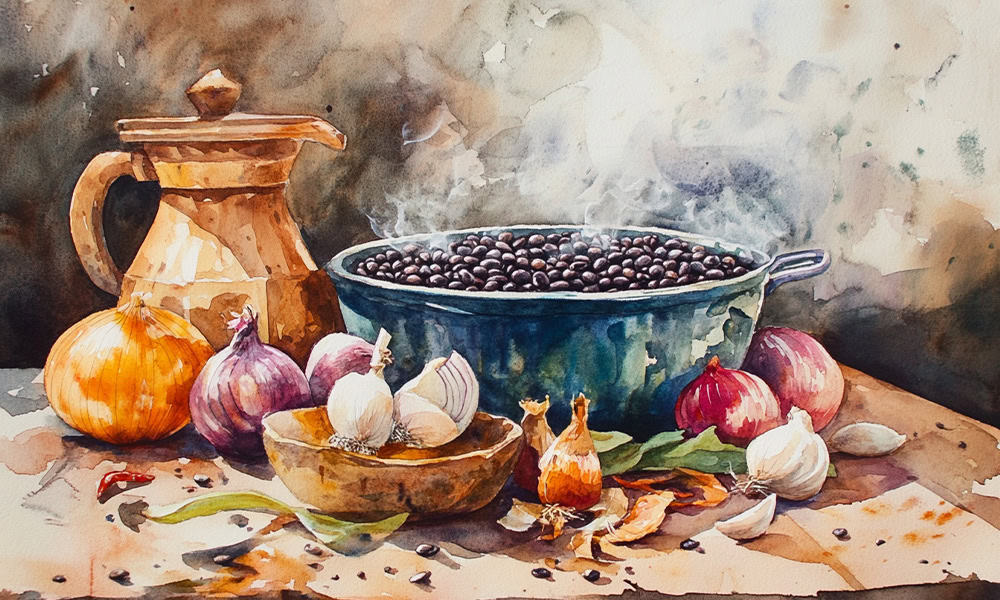Beans, beans, the magical fruit…remember that little ditty? The more you eat the more you toot, the more you toot the better you feel, so let’s have beans for every meal! Besides the fact that beans are a legume, not a fruit, and “toot” is a weird euphemism (and for those of us who were partying in the 1980s, that word has a whole other meaning), I am otherwise in agreement with the message.
After over three decades in Costa Rica, I have become a bean addict. And I am not talking about Campbell’s pork and beans in a can. I’m talking real beans, grown, harvested, and packaged right here in Ticolandia.
And what better place for my addiction! We live in the heart of bean country. The common bean originated and was domesticated in Mesoamerica (Mexico to Colombia) about 8,000 years ago. Beans are a true superfood—diverse and nutritious with plenty of protein and fiber per serving. For years I ate the packaged refried beans, but they come with a lot of additives, so I switched to the real thing.
An 800-gram bag of black beans costs about 1,000 colones. I rinse them and then slow-cook them all night with a whole onion sectioned and a head of garlic. This provides around 20 servings—great with eggs at breakfast or mixed with homemade tomato sauce for a simple chili.
While black beans are my personal favorite, there are an estimated 400 types of beans grown worldwide. This diversity came through a slow process, as farmers selected the plants they liked best and saved seeds from them. Over generations, they evolved beans toward heat tolerance, frost resistance, and more. They passed these seeds and knowledge down, and the cycle continued.
Today, you will find various ferias (markets) throughout the country celebrating the frijol and the types grown here. The most commonly eaten varieties in Costa Rica are black, red, green (vainicas), lentils, and garbanzos (chickpeas).
The Bean Revolution and Its Benefits
I am not alone in my passion for beans. There is a quasi-cult of fanatics who refer to themselves as the “leguminati.” They preach the benefits of beans with all the fervor of a born-again believer. Their goal is to transform the diets of people across the world and spark a revolution in food production and consumption.
As a source of protein, beans have a much smaller water footprint than meat. Not only that, but bean crops naturally increase the nitrogen content in soil, making the nitrogen accessible to other plants around them. In this way, beans don’t just grow nutritious, delicious food—they also enrich the soil they grow in.
Where the road splits for me with the leguminati is their hardcore vegan stance. I am an omnivore—I eat it all. For protein, besides beans, eggs, and nuts, I eat chicken, seafood, and occasionally beef. I try to avoid pork. The reasons for this are many and varied; however, it is the intelligence of pigs that bothers me. They are smarter than dogs, and studies have shown they have the level of intelligence of a 3-year-old child.
What does it mean? Well, if dog meat tasted better than bacon, the whole pet situation might be turned upside down. You might be taking your pet Porky to the community dog roast!
So if you want to consume a healthy level of protein while also contributing to the well-being of the planet, eat your beans.







